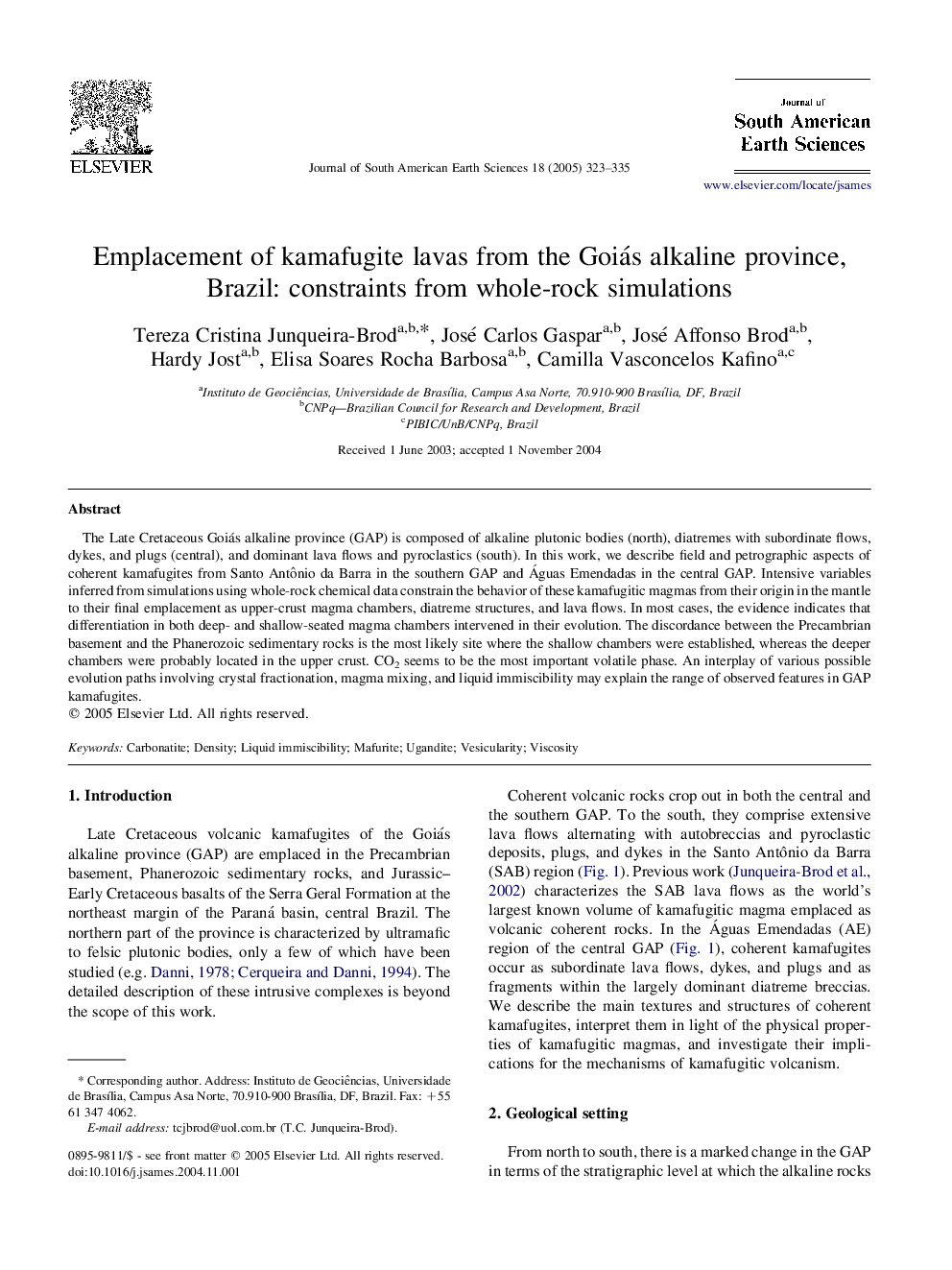| Article ID | Journal | Published Year | Pages | File Type |
|---|---|---|---|---|
| 9524459 | Journal of South American Earth Sciences | 2005 | 13 Pages |
Abstract
The Late Cretaceous Goiás alkaline province (GAP) is composed of alkaline plutonic bodies (north), diatremes with subordinate flows, dykes, and plugs (central), and dominant lava flows and pyroclastics (south). In this work, we describe field and petrographic aspects of coherent kamafugites from Santo Antônio da Barra in the southern GAP and Águas Emendadas in the central GAP. Intensive variables inferred from simulations using whole-rock chemical data constrain the behavior of these kamafugitic magmas from their origin in the mantle to their final emplacement as upper-crust magma chambers, diatreme structures, and lava flows. In most cases, the evidence indicates that differentiation in both deep- and shallow-seated magma chambers intervened in their evolution. The discordance between the Precambrian basement and the Phanerozoic sedimentary rocks is the most likely site where the shallow chambers were established, whereas the deeper chambers were probably located in the upper crust. CO2 seems to be the most important volatile phase. An interplay of various possible evolution paths involving crystal fractionation, magma mixing, and liquid immiscibility may explain the range of observed features in GAP kamafugites.
Related Topics
Physical Sciences and Engineering
Earth and Planetary Sciences
Earth and Planetary Sciences (General)
Authors
Tereza Cristina Junqueira-Brod, José Carlos Gaspar, José Affonso Brod, Hardy Jost, Elisa Soares Rocha Barbosa, Camilla Vasconcelos Kafino,
